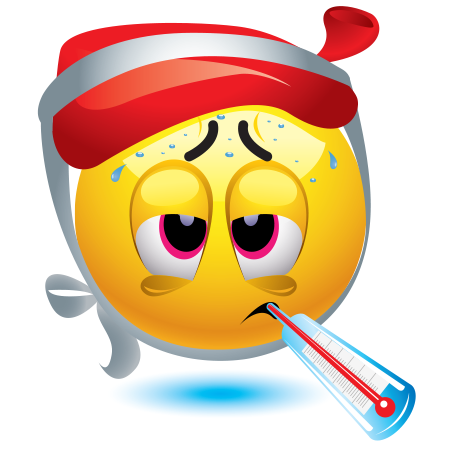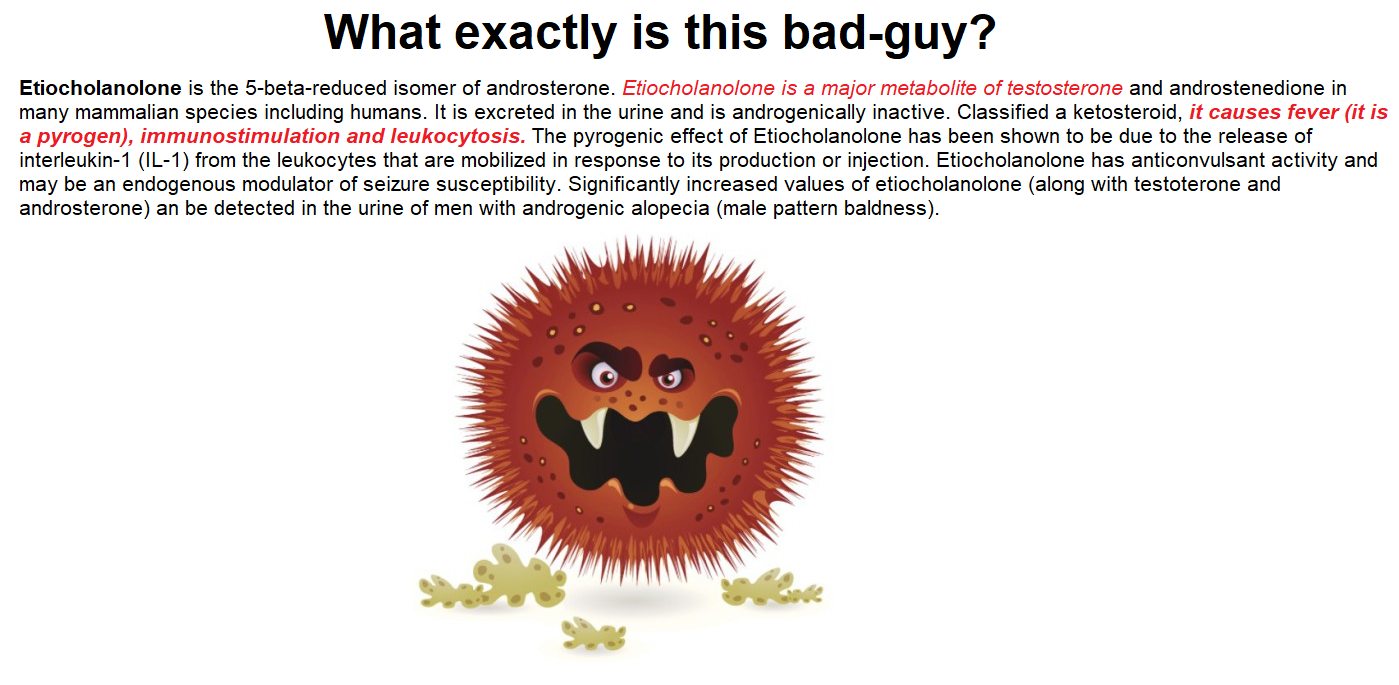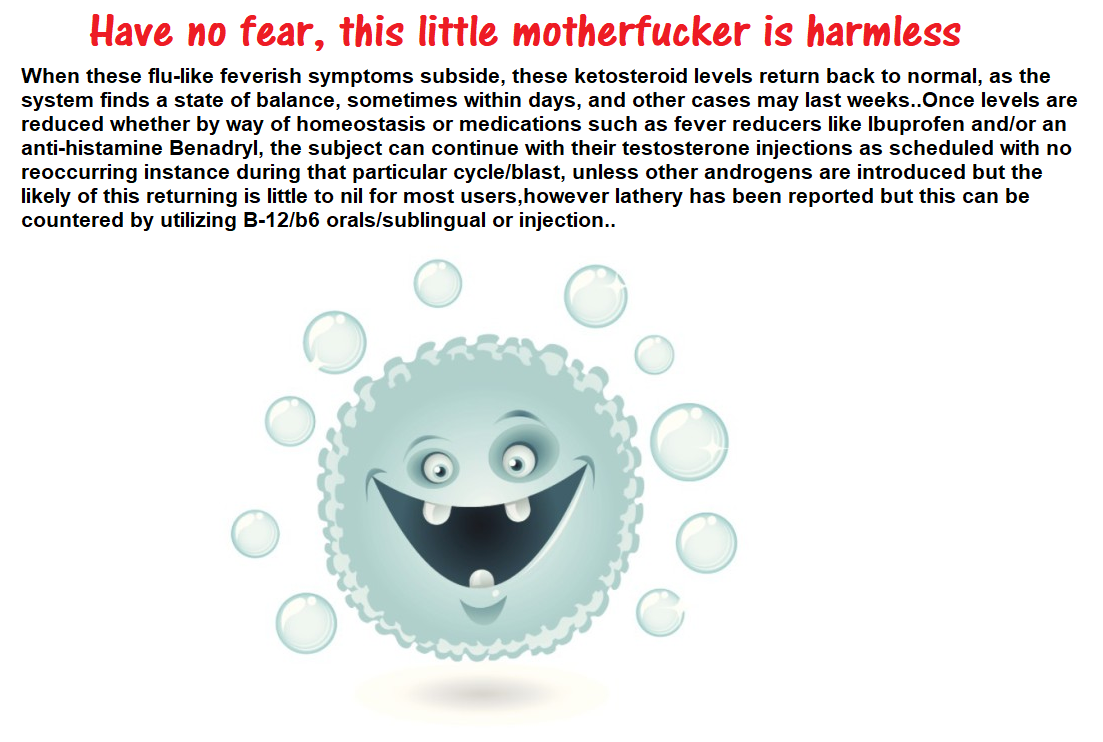Once again, the topic "Test-Flu" has recently gained our attention.
What is it, and do others experience it?
There's many factors to examine here.. Let's consider the age & genetics of the user,
the cycle/compounds being utilized and quantity/dosage..These are just a few examples to review!
Beyond anything else here: The question "test flu" can prove rather difficult to generalize because of so many variables at play here.
Such as the solvent/carrier used and ratio, quality and sterilization, or even remaining acidic residuels left behind in the raw material
from the manufacture cutting corners during the manufacturing process,
yielding poor quality which all my induce a lymphatic immune response.
This will differ from one instance to the next as well as the users sensitive will vary, and at times the route chosen for administration, sensitive injections sites..
Now, although we have a template here of what could possibly be taking place, there's an even more plausible explanation..
Keep in mind This all becomes dependent on the individual..There may not be a definitive answer for everyone,
but ultimately one should take great consideration the explanation that is about to be provided here.
Pyrogenicity of etiocholanolone and interleukin-1 in New and Old World Monkeys.
Abstract
Etiocholanolone (5beta-androstan-3alpha-ol-17-one; designated E) is one of the major products of metabolism of testosterone and
androstenedione (androst-4-ene-3,17-dione) in many mammalian species,including humans.
E and several other 5beta-reduced steroids have been found to induce fever in humans.
The pyrogenic effect of these steroids has been shown to be due to the release of interleukin-1 (IL-1) from the leukocytes that are mobilized in response to the steroid injections.
Old World Monkeys such as Rhesus monkeys (Macaca mu/atta), metabolize androgens similarly to humans, and E is a normal metabolite.
However, New World Monkeys such as Squirrel monkeys (Saimiri sciureus),
lack hepatic 5alpha- and 5beta-steroid reductases and excrete androgens primarily in an unaltered state; E is not produced.
Therefore, we postulate that Squirrel monkeys likewise may have lost the ability to respond to 17-ketosteroids such as E. To test this hypothesis,
adult male Rhesus and Squirrel monkeys were treated with E, and their rectal temperatures were recorded over a 24-hr period.
Rhesus monkeys exhibited a rise of up to 3 degrees F following E injection. Squirrel monkeys, on the other hand,
did not exhibit any increase in rectal temperature over the 24-hr period, even when doses up to 250 times the effective human dose were used.
However, both species responded to injected IL-1alpha with a robust increase in rectal temperature.
The data show that E is pyrogenic in Rhesus, but not Squirrel monkeys.
The findings support the notion that injected E may induce release of IL-1 in Rhesus monkeys, but not in Squirrel monkeys.
Now Studies have shown that men are in fact more likely to get sick,
have a fever or contract the flu due to TESTOSTERONE levels..
So, the next time your girlfriend or wife calls you a baby, school here and don't feel so bad,
because the science/medical community understands how you feel!
I hope this information above provides some clarity on why some users report having "flu-like" symptoms
while utilizing Testostrone or other AAS.
Best regards,
Vision team P.S.L.




























































 Reply With Quote
Reply With Quote

Bookmarks